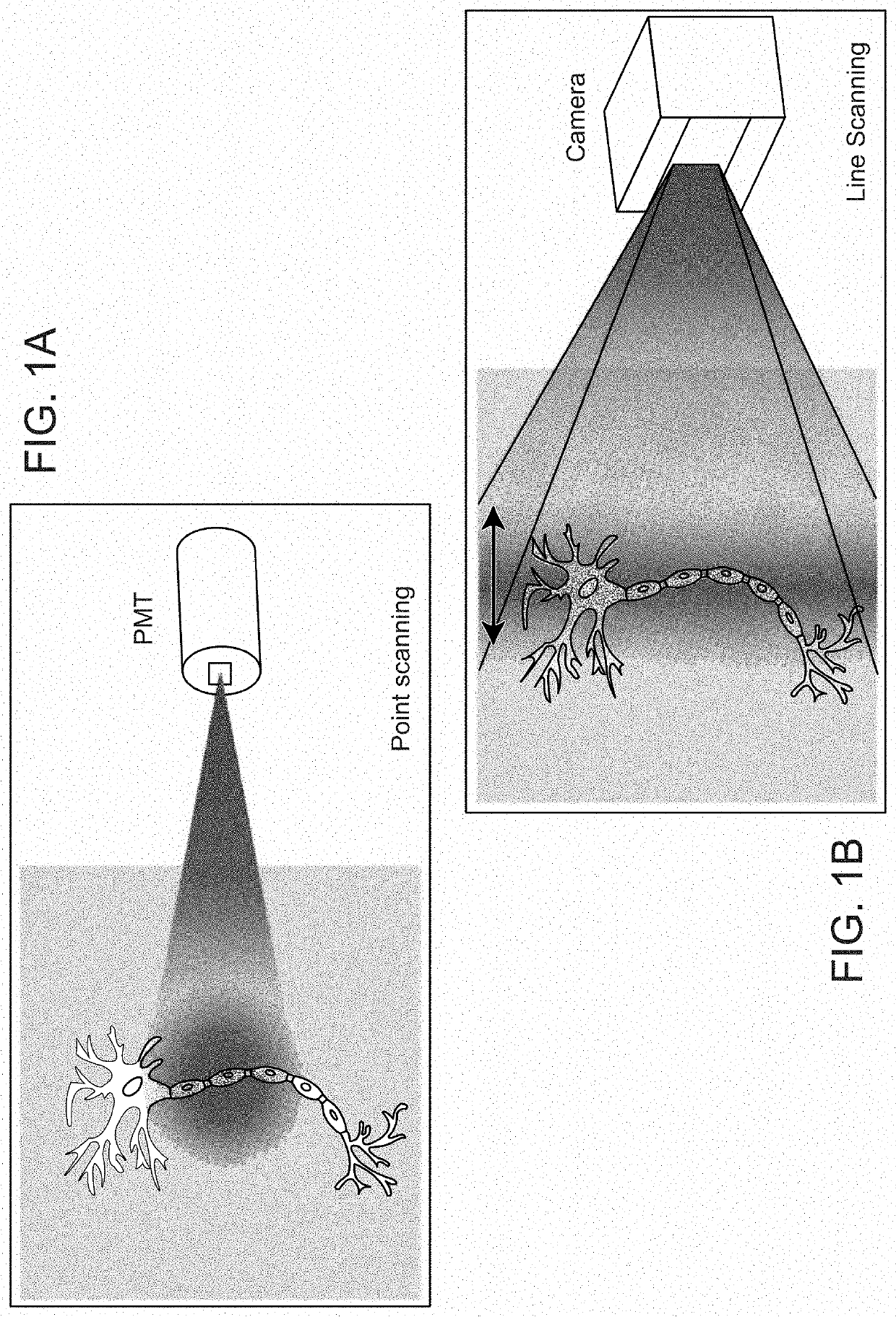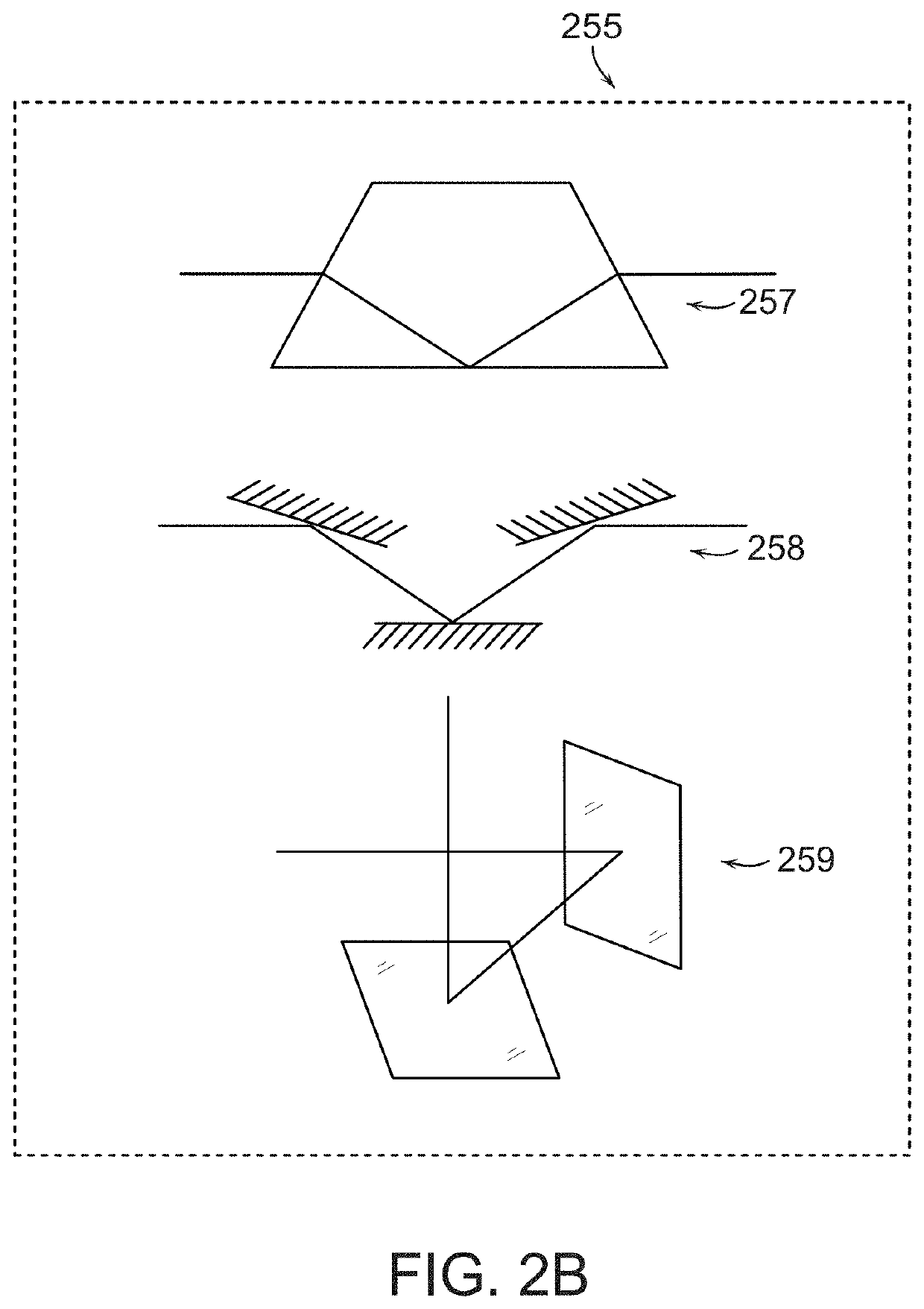Systems and methods to reduce scattering in temporal focusing multiphoton microscopy
a multi-photon microscopy and temporal focus technology, applied in the field of multi-photon fluorescence microscopy, can solve the problems of limited imaging speed, slow conventional multi-photon microscopy, and hinder the study of biological fast dynamics, so as to reduce scattering influence, high image acquisition speed, and high acquisition speed
- Summary
- Abstract
- Description
- Claims
- Application Information
AI Technical Summary
Benefits of technology
Problems solved by technology
Method used
Image
Examples
Embodiment Construction
[0048]Systems and methods described herein provide improved multiphoton microscopic imaging methods that overcome limitations due to emission scattering. As compared to conventional point-scanning methods, the systems and methods described herein provide faster data acquisition without sacrificing signal-to-noise ratio in the final image. Systems and methods described herein spatially encode illuminated regions using structured illumination to illuminate a sample and decode spatial information in the sample from the resulting images. In some embodiments described herein, multiline angular scanning temporal focusing (masTF) can be used to increase imaging speed and reduce scattering using photon reassignment techniques. In some embodiments described herein, arbitrary pattern projecting wide-field temporal focusing (APP-WFTF) can be used to encode sections of the thick sample with arbitrary patterns to enable subsequent reconstruction. In some embodiments herein, De-scattering with Ex...
PUM
| Property | Measurement | Unit |
|---|---|---|
| thick | aaaaa | aaaaa |
| thick | aaaaa | aaaaa |
| full-width half-maximum | aaaaa | aaaaa |
Abstract
Description
Claims
Application Information
 Login to View More
Login to View More - R&D
- Intellectual Property
- Life Sciences
- Materials
- Tech Scout
- Unparalleled Data Quality
- Higher Quality Content
- 60% Fewer Hallucinations
Browse by: Latest US Patents, China's latest patents, Technical Efficacy Thesaurus, Application Domain, Technology Topic, Popular Technical Reports.
© 2025 PatSnap. All rights reserved.Legal|Privacy policy|Modern Slavery Act Transparency Statement|Sitemap|About US| Contact US: help@patsnap.com



